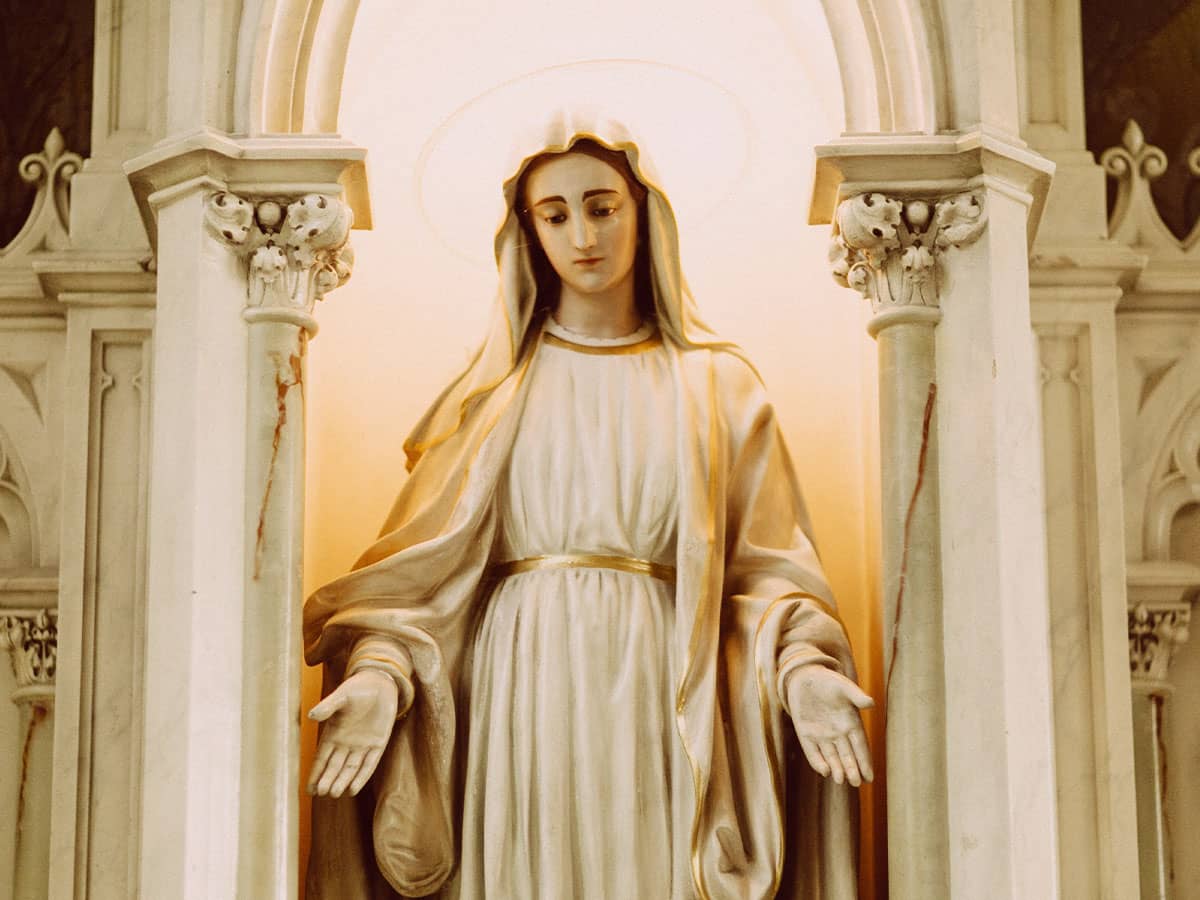Many of us who were Catholic children in the '50s and early '60s have fond memories of the month of May, "Mary's month." Mid-spring's warmth usually coaxed the fragrance out of lilacs and lilies-of-the-valley in time for "May altars," which were set up in parish school classrooms and in homes. We practiced singing "On This Day, O Beautiful Mother" and "Bring Flowers of the Rarest"; the latter song contained the important refrain: "O Mary, we crown thee with blossoms today..." which was absolutely necessary for a successful May Crowning. And which eighth-grade girl would be the May Queen, the one chosen to crown the statue of Our Lady in the church? That was always an important topic of conversation! For the younger children, Mother's Day was a popular choice for First Communion. We remember being given white rosaries to carry on that special day, and being consecrated to our Heavenly Mother after the Mass.
I sometimes hear people say regretfully that "All that got thrown out with Vatican II." This may be an honest expression of their sentiments, but it is not an accurate assessment of the reforms of the Second Vatican Council (1963-1965). It is true that the Council Fathers (the bishops from all over the world who participated in the Council) decided not to devote an entire document to Mary. If we study the last chapter of the Council's "Dogmatic Constitution on the Church," it becomes obvious that the Council Fathers did not exactly push Mary out of one of those "windows" that Pope John XXIII threw open to bring the fresh air of renewal into the Church. In fact, the Council did not discourage true devotion to Mary, Mother of God. "The Church has endorsed many forms of piety toward the Mother of God, provided that they were within the limits of sound and orthodox doctrine. ... While honoring Christ's Mother, these devotions cause her Son to be rightly known, loved and glorified, and all His commands observed" (66, Paragraph 2).
Despite this, some people still feel that Mary has been "demoted," especially in the liturgy. A familiar lament is: "We don't sing Mary's songs at Mass anymore, not even during her month of May." This may be true, and understandable. The Easter Season lasts from the Easter Vigil until Pentecost Sunday; and depending on the date of Easter, we can be celebrating this 50-day festival until at least mid-May. The music chosen for Eucharistic Liturgy would reflect the Easter Season scripture readings. A song like "Immaculate Mary" probably would not fit on any of the Sundays of Easter (although it would be appropriate for the Dec. 8 feast of the Immaculate Conception). On the other hand, a song like "Be Joyful Mary," which highlights Mary's joy in the resurrection of her Son, might be a good choice for a May Sunday liturgy.
Is May still "Mary's month?" The answer is probably yes, but in a different way than I ever imagined in my childhood. The oldest icons of Mary do not depict her alone; she is always pointing to her Son. Most, and sometimes all, of May is included in the celebration of the Easter Season. Perhaps at this time of the year we can envision Mary pointing to her Son, spreading the Good News of His resurrection, enjoying His presence, becoming a model disciple, praying in the upper room, being open once again to the fullness of that same Spirit who overshadowed her and would again overshadow her, helping to give new birth to the Body of Christ, the Church. As one of my grade school teachers said long ago: "Mary would never want us to pay more attention to her than to her Son."

